Invented by Adolphe Sax in 1846, the saxophone has journeyed from 19th-century military bands to jazz clubs and concert halls, embodying a blend of innovation and artistry. Initially crafted in wood, the transition to brass revolutionized its sound, making it a staple in diverse musical genres.
From the sultry solos in jazz to iconic rock anthems, the saxophone’s rich tones have captivated audiences worldwide. Dive into these fun facts about saxophones to explore the intriguing evolution and widespread impact of this remarkable instrument.
1. The Birth of the Saxophone: Adolphe Sax’s Brainchild
Belgian inventor Adolphe Sax patented the saxophone on June 28, 1846. His goal was to meld the powerful dynamics of brass with the expressive capabilities of woodwinds. This new instrument rapidly gained a foothold in orchestras and military bands, thanks to its versatile sound that could both blend in and stand out.
Sax didn’t just stop at one instrument; he created a family of saxophones, each with a distinct pitch and role, enriching the musical tapestry of that era.
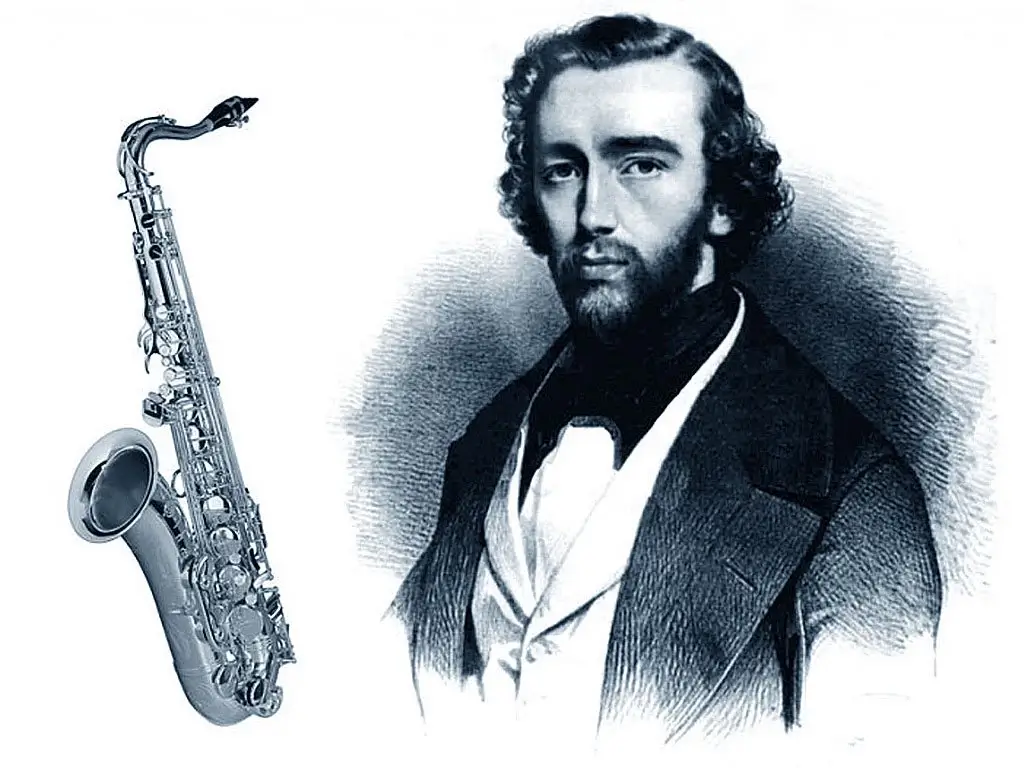
Image: brusselstimes.com
2. Saxophones Weren’t Always Brass: A Historical Twist
The saxophone’s journey from wood to brass is a testament to its evolving role in music. Originally, these instruments were crafted from wood, akin to their woodwind cousins. The shift to brass, however, marked a pivotal moment, enhancing the saxophone’s durability and imparting a richer, more resonant sound.
This transition was crucial in its adoption in jazz and big band ensembles, where its distinctive tone became a defining feature.
3. Military Bands and the Saxophone: A Historic Alliance
The saxophone found its initial widespread use in military bands of the mid-19th century. These bands, seeking instruments that could project sound effectively outdoors, found the saxophone’s clear, robust tone ideal.
Its adoption by European, especially French, military bands not only popularized the instrument but also influenced its design, optimizing it for outdoor performance and durability, thus cementing its place in the annals of military music.
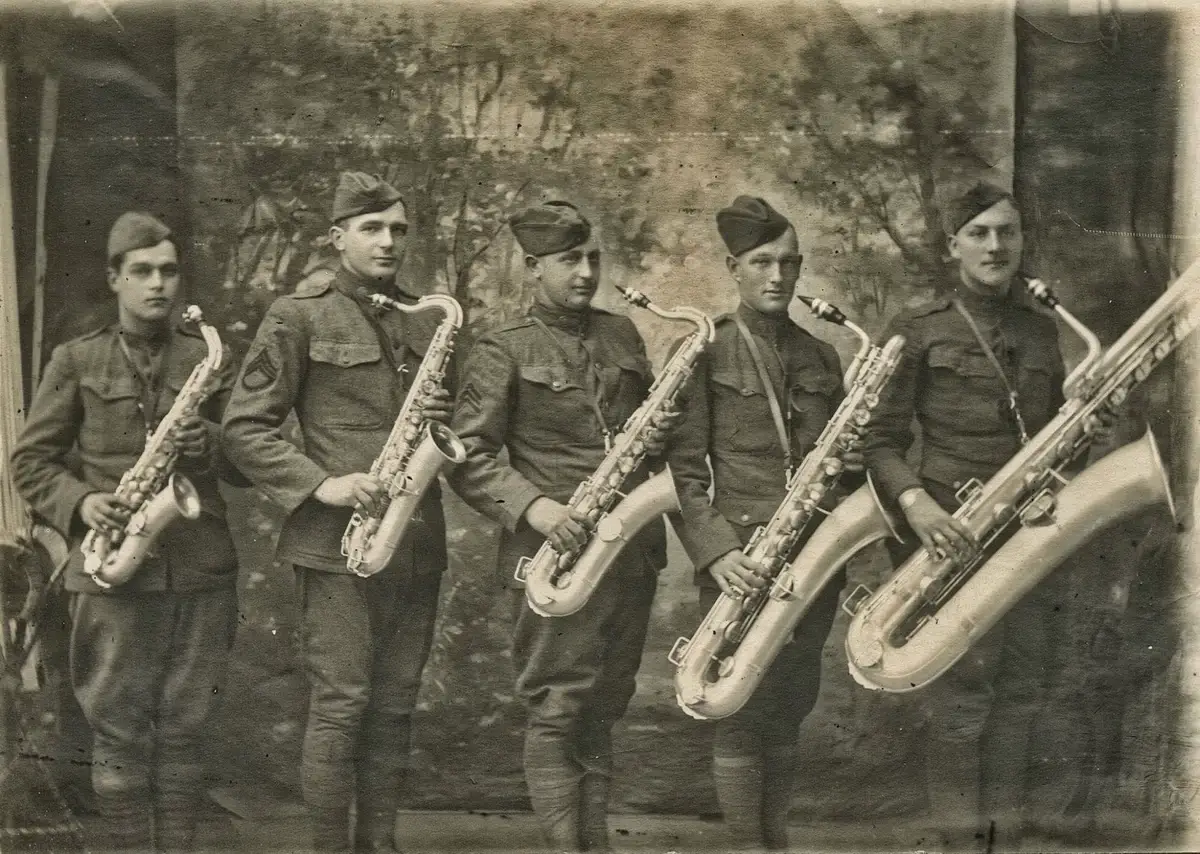
Image: temposenzatempo.blogspot.com
4. Patent Battles: The Saxophone’s Controversial Start
The saxophone’s innovation led to intense patent disputes for Adolphe Sax. As his invention gained popularity, rival instrument makers sought to capitalize on the design, leading to numerous legal battles. These disputes not only highlighted the saxophone’s unique qualities but also propelled it into the public eye, fostering its spread across Europe and into the burgeoning American music scene.
Sax’s perseverance in these legal battles was instrumental in maintaining the saxophone’s integrity and distinctiveness.
5. The Sax Family: A Variety of Eight
The saxophone family, as conceptualized by Adolphe Sax, comprises eight distinct members, each with its own pitch range: sopranino, soprano, alto, tenor, baritone, bass, contrabass, and subcontrabass. This variety allows for a wide spectrum of tones, from the high-pitched sopranino to the deeply resonant subcontrabass.
The diversity within the sax family enables it to blend seamlessly across various musical genres, showcasing its versatility and adaptability.
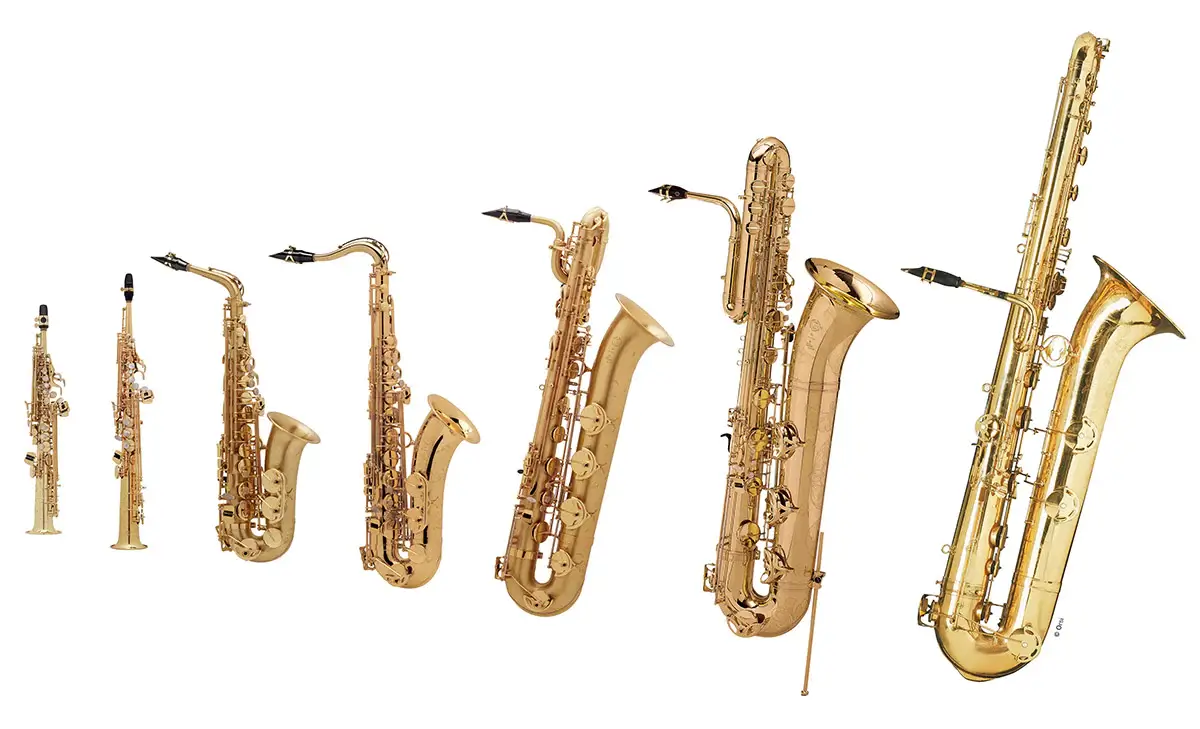
Image: selmer.fr
6. Jazz and the Saxophone: An Unbreakable Bond
The saxophone found its true calling in jazz, a genre where it has become almost synonymous with the music itself. Its expressive capabilities and distinctive sound made it a staple in jazz ensembles. Iconic musicians like John Coltrane and Charlie Parker revolutionized jazz saxophone playing, using the instrument to convey profound emotion and complex musical ideas.
The saxophone’s ability to mimic the human voice made it particularly appealing in jazz, allowing for a level of expression that resonated deeply with audiences.
7. The Saxophone’s Key System: A Revolutionary Design
The saxophone’s key system is a marvel of musical engineering. Developed by Adolphe Sax, it allows for a smooth transition between notes, enabling a level of playability that was revolutionary at the time.
This system consists of a complex arrangement of levers, pads, and keys, which collectively allow for precise control over the instrument’s pitch and tonality. This key system has been refined over the years but still retains the fundamental principles laid down by Sax.

Image by Freepik
8. Classical Composers’ Love for Sax: Debussy and Others
While predominantly associated with jazz, the saxophone has also made significant inroads into classical music. Composers like Claude Debussy were mesmerized by its unique timbre. Debussy’s “Rhapsodie” for saxophone and orchestra is a prime example, showcasing the instrument’s lyrical and expressive qualities.
Other composers, including Maurice Ravel and Alexander Glazunov, also wrote pieces that highlighted the saxophone’s versatility, integrating it into the classical canon.
9. Saxophones in Rock and Roll: An Unexpected Twist
The saxophone, often associated with jazz and classical music, made a surprising foray into rock and roll. Its robust and versatile sound proved to be a perfect match for the energetic and rebellious spirit of rock. Notable rock artists, including Bruce Springsteen and David Bowie, incorporated the saxophone into their music, giving it a prominent role in songs that became classics.
The instrument’s ability to add a raw, powerful edge to rock tunes helped redefine its image, showing its adaptability across genres.
10. The Saxophone’s Movie Stardom: Iconic Soundtracks
The saxophone has also left an indelible mark on the film industry, featuring in numerous iconic soundtracks. Its expressive sound has been used to evoke a range of emotions, from the sultry and seductive to the melancholic and introspective.
Memorable examples include the haunting solo in “Taxi Driver” and the romantic themes in “The Pink Panther”. The instrument’s cinematic use underscores its ability to capture and enhance the emotional undertones of a scene.
11. Famous Saxophonists: John Coltrane and Charlie Parker
John Coltrane, born in 1926, revolutionized jazz saxophone with his innovative techniques and deeply emotional playing. His landmark album “A Love Supreme,” recorded in 1964, is renowned for its profound musical exploration and technical mastery. Coltrane’s influence extends beyond jazz, impacting various music genres and inspiring countless musicians.
Charlie Parker, also known as “Bird,” born in 1920, was pivotal in the development of bebop. His fast-paced, harmonically complex playing redefined the possibilities of jazz saxophone. Parker’s 1945 recording “Ko-Ko” is a prime example of his groundbreaking approach to improvisation and rhythm.
Both Coltrane and Parker were instrumental in elevating the saxophone from a mere ensemble instrument to a vehicle for complex solo expression, profoundly influencing the evolution of modern jazz and saxophone technique.
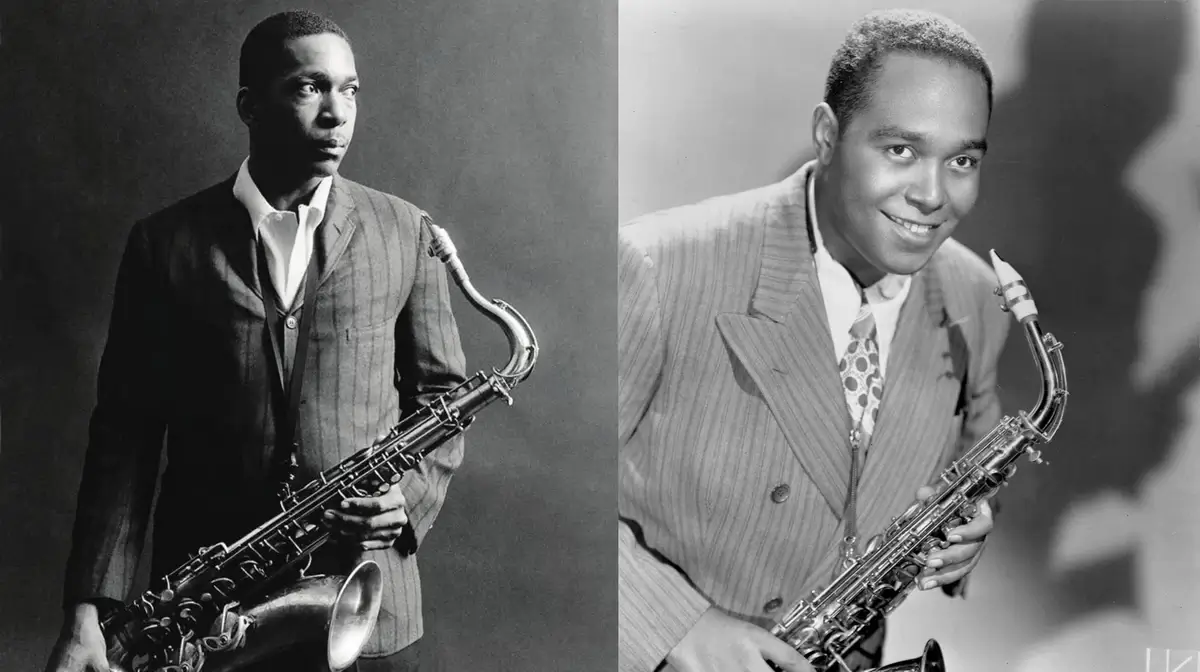
John Coltrane on the left and Charlie Parker on the right. Image: selmer.fr / nytimes.com
12. World Record Saxophones: Largest and Smallest
In the world of saxophones, size can vary dramatically. The subcontrabass saxophone holds the title for the largest in the family, reaching over 6 feet in height and producing deep, resonant tones. On the other end of the spectrum is the tiny sopranissimo or ‘soprillo’ saxophone, measuring a mere 12 inches.
These extremes showcase the instrument’s incredible range and versatility, captivating both players and audiences.
13. Saxophone Mouthpieces: A Key to Unique Sounds
The saxophone’s mouthpiece is crucial in shaping its sound. Varied in material, shape, and size, each mouthpiece can drastically alter the tone and playability of the instrument.
Jazz players often prefer larger, open mouthpieces for a fuller, more resonant sound, while classical players may opt for smaller, closed mouthpieces for precision and control. This customization allows saxophonists to find their unique voice, contributing to the instrument’s diverse sonic palette.

Image: theworldofsax.com
14. Metal vs. Wood: The Saxophone’s Material Debate
The debate between metal and wood in saxophone construction is a fascinating aspect of its history. Originally, saxophones were made from wood, which gave them a softer, mellower tone. However, the shift to metal, particularly brass, transformed the instrument’s sound, offering a brighter, more resonant quality.
This change sparked discussions among musicians about tone preferences, with some purists advocating for the warmer tones of wood, while others prefer the brighter, sharper sound of metal saxophones. This material evolution underlines the saxophone’s ongoing journey in the quest for the perfect sound.
15. Saxophones in Space: Extraterrestrial Performance
The saxophone nearly made a cosmic debut with astronaut Ronald McNair, who planned to play it aboard the Space Shuttle Challenger in 1986. This remarkable idea symbolized the saxophone’s transcendent appeal, illustrating its potential to connect cultures and worlds.
Although the mission tragically ended, McNair’s intention remains a testament to the instrument’s universal allure and the endless possibilities of music beyond Earth’s confines.
16. The Saxophone’s Influence on Pop Music
In pop music, the saxophone has left an indelible mark, contributing to some of the genre’s most memorable moments. Its expressive tone and versatility have allowed it to fit seamlessly into various pop styles.
From the smooth, melodic lines in George Michael’s “Careless Whisper” to the upbeat, catchy riffs in Katy Perry’s “Last Friday Night,” the saxophone has proved to be a dynamic and emotive force in pop music.
17. Unique Saxophone Designs: Grafton and Beyond
Throughout its history, the saxophone has seen unique design innovations, like the Grafton saxophone. Made of acrylic glass in the 1950s, the Grafton stood out with its clear body and lighter weight, making a visual and auditory impact.
Other design variations have included folding saxophones for portability and different material compositions for tonal experimentation, reflecting the instrument’s continuous evolution and adaptability.
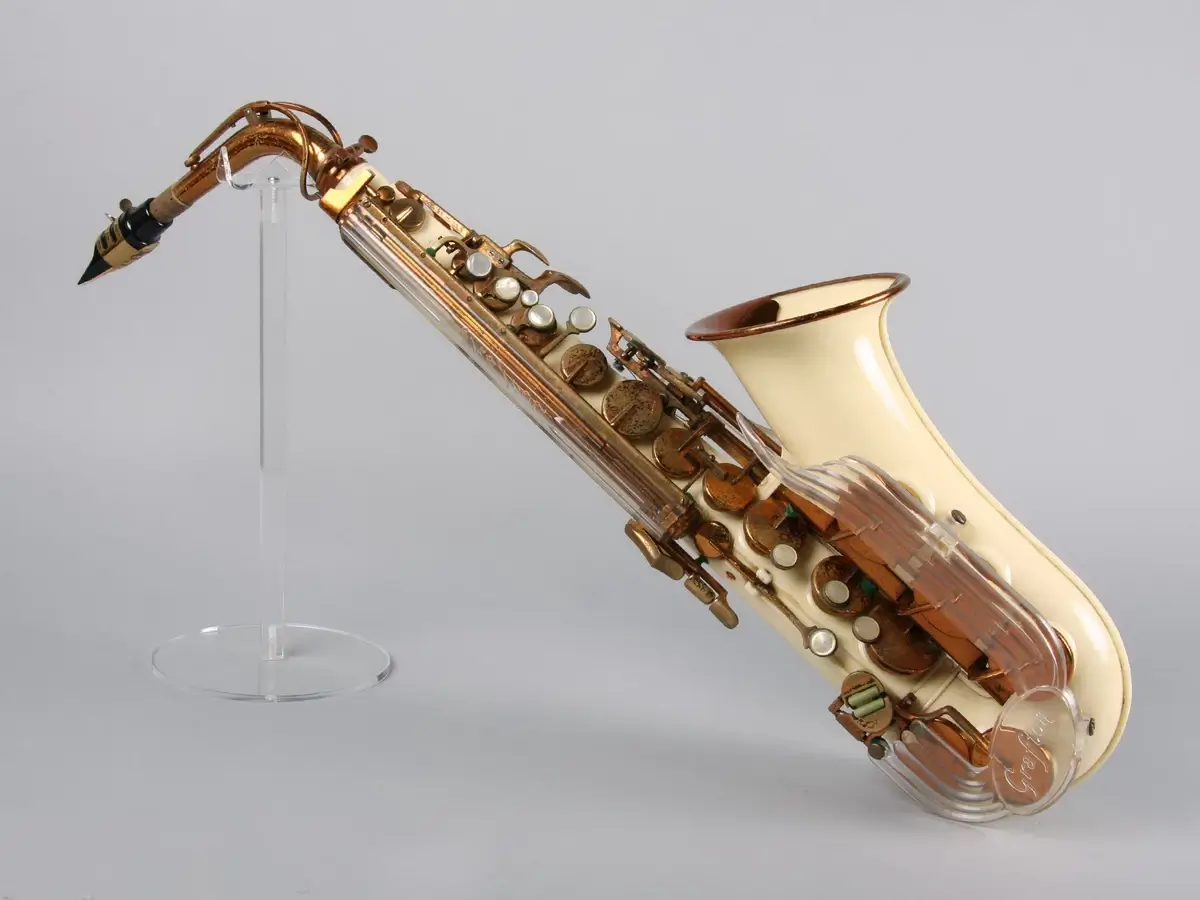
The Grafton saxophone. Image: modip.ac.uk
18. Saxophone Manufacturing: Precision and Skill
The manufacturing of saxophones is a meticulous process, combining precision engineering with artisanal craftsmanship. From shaping the brass body to intricately assembling the key mechanisms, each step requires skilled hands and a deep understanding of acoustics.
Modern manufacturing techniques have introduced new materials and designs, but the core principles of saxophone construction remain rooted in tradition, emphasizing quality and sound perfection.
19. The Saxophone in Education: A School Band Staple
The saxophone has become a staple in school bands worldwide, admired for its expressive sound and relative ease of learning compared to other wind instruments. Its inclusion in educational settings has introduced countless young musicians to the joys of music-making and ensemble playing.
The instrument’s versatility in style and range makes it an ideal choice for developing musical skills and fostering a lifelong love for music.

Image: mavink.com
20. Saxophone Maintenance: Key to Longevity
Proper maintenance is crucial for the longevity and performance of a saxophone. Regular cleaning, careful handling of its delicate keys, and periodic check-ups are essential to keep it in top playing condition.
From replacing worn pads to adjusting the key mechanisms, each aspect of maintenance ensures the instrument produces the best sound quality and prevents long-term damage. This care underlines the saxophone’s status as not just an instrument but a cherished companion for musicians.
21. Global Saxophone Festivals: Celebrating the Instrument
Saxophone festivals around the world celebrate this versatile instrument, bringing together enthusiasts, professional musicians, and students. Events like the World Saxophone Congress and North American Saxophone Alliance conferences feature performances, workshops, and lectures.
These gatherings not only showcase the instrument’s range but also foster a sense of community among saxophonists, encouraging collaboration and the sharing of techniques and styles.
22. Innovations in Saxophone Technology
Technological advancements have continually influenced saxophone design and playability. Modern innovations include improved key mechanisms for faster, smoother playing, and the use of new materials for enhanced sound quality and durability.
Electronic enhancements, such as MIDI (Musical Instrument Digital Interface) saxophones, have also expanded the instrument’s capabilities, allowing for a fusion of traditional and electronic music styles.

Image: jazzwise.com
23. Saxophones in Orchestras: A Rare Sight
While the saxophone is a staple in jazz and band settings, its presence in orchestral music is relatively rare. This rarity is due to its late invention and the established orchestral tradition by the time of its introduction.
However, when featured, the saxophone adds a unique timbre, often used by composers to evoke specific moods or colors within orchestral pieces, demonstrating its versatility even in this classical domain.
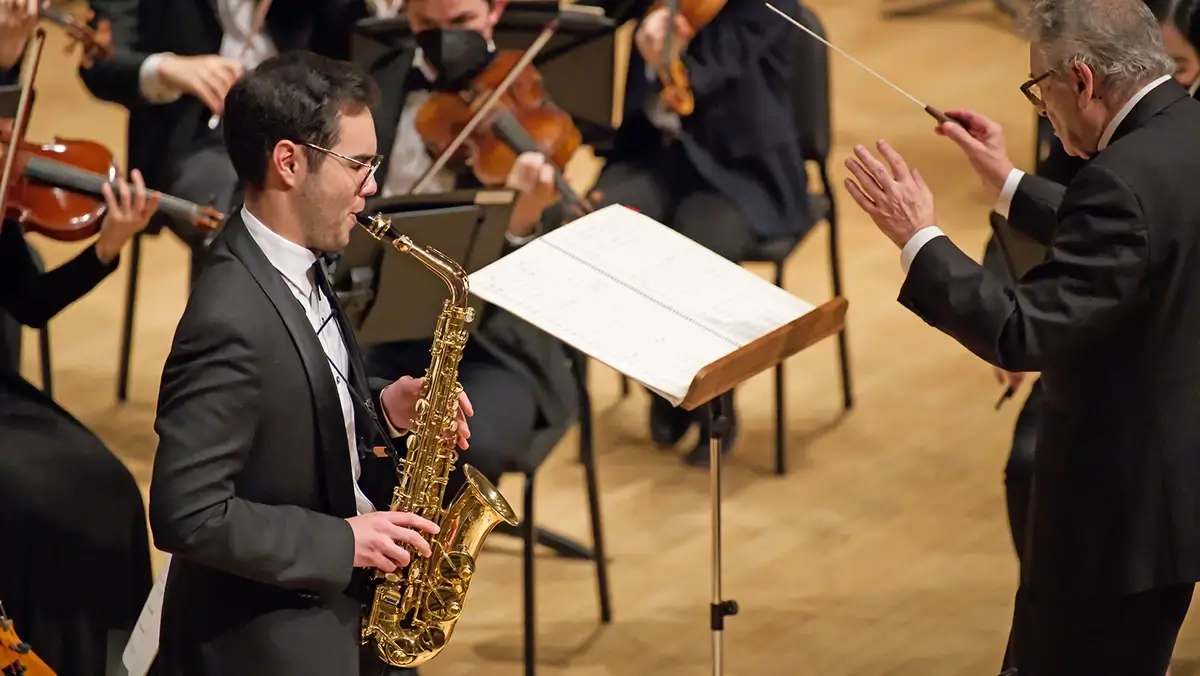
Image: music.northwestern.edu
24. Environmental Impact on Saxophone Production
The production of saxophones, like many manufacturing processes, has an environmental impact. The use of metals, especially brass, and the energy-intensive processes involved in their production and shaping raise concerns. Manufacturers are increasingly aware of this and are exploring more sustainable practices, including recycling old instruments and using more eco-friendly materials.
This shift reflects a growing consciousness in the music industry about the need to balance quality instrument production with environmental responsibility.
25. The Saxophone’s Role in Cultural Movements
Throughout its history, the saxophone has been more than a musical instrument; it has been a powerful symbol in cultural movements. In the 1950s and 1960s, during the height of the civil rights movement, artists like John Coltrane used the saxophone as a tool for expression and protest. The saxophone’s emotive sound resonated with the themes of struggle and liberation, giving voice to the sentiments of the era.
Similarly, in the 1920s, during the Harlem Renaissance, the saxophone played a central role in jazz, which was then a burgeoning form of African American artistic expression. The instrument’s versatility has allowed it to adapt and become integral in various cultural and social movements worldwide.
26. Saxophone in Video Games: Memorable Themes
In the world of video games, the saxophone has added an unforgettable dimension to many iconic themes. For instance, the haunting saxophone solo in “Grim Fandango” (1998) captures the game’s noir atmosphere perfectly. Similarly, in “The Sexy Brutale” (2017), the saxophone’s smooth tunes underscore the game’s unique art deco style and mystery elements.
These examples illustrate how the saxophone’s soulful sound can enhance a game’s emotional landscape, creating a more immersive experience for players.
27. Saxophone Day: Celebrating the Instrument Annually
Saxophone Day, observed on November 6th, commemorates the birth of the saxophone’s inventor, Adolphe Sax, born in 1814. This day is celebrated by saxophonists worldwide with various events, from concerts and recitals to educational workshops.
It’s a reflection of the global impact and love for the saxophone, showcasing its evolution and the diverse styles it encompasses. Schools and music institutions often host special events on this day, encouraging students and the public to engage with and learn about the saxophone’s rich history and musical versatility.
FAQ
Who Made the Saxophone Famous?
The saxophone’s rise to fame can be attributed to several key musicians, especially in the realm of jazz. Legendary figures like John Coltrane, Charlie Parker, and Sonny Rollins played pivotal roles in showcasing the saxophone’s unique sound and expressive potential. Their innovative techniques and emotional playing styles brought the instrument into the limelight in the jazz world, influencing generations of musicians and music lovers.
What is So Special About Saxophone?
The saxophone’s special appeal lies in its unique sound, which blends the warmth of woodwinds with the power of brass instruments. Its design allows for a wide range of expressive capabilities, from soft, mellow tones to powerful, resonant blasts. The saxophone’s versatility makes it suitable for various music genres, from jazz and classical to pop and rock, demonstrating its adaptability and enduring appeal.
Why is it Called a Saxophone?
The saxophone is named after its inventor, Adolphe Sax, a Belgian instrument maker who designed and patented it in the 1840s. The “phone” part of the name comes from the Greek word ‘phonos’, meaning sound or voice. Therefore, “saxophone” essentially means the sound or voice of Sax.
What is the Hardest Thing About Saxophone?
One of the hardest aspects of playing the saxophone is mastering the embouchure, or the way in which a player applies their mouth to the mouthpiece. Achieving the correct embouchure is crucial for producing a good tone and requires precise control of facial muscles. Additionally, mastering the intricate key system and developing the breath control needed to play long, smooth phrases are also challenging aspects of playing the saxophone.
Why Do Saxophones Have Bells?
The bell of a saxophone plays a crucial role in sound projection and tone quality. It helps in spreading the sound waves outwards and adds to the instrument’s overall resonance. The shape and size of the bell can significantly affect the saxophone’s timbre, making it an essential element in the instrument’s design.
Are Saxophones Hard?
Learning to play the saxophone can be challenging, especially in mastering breath control, finger placement, and embouchure. However, compared to some other wind instruments, the saxophone is often considered to have a more straightforward learning curve, especially for beginners. The challenge level can vary depending on the type of saxophone and the music genre.
Are Saxophones Easy?
The saxophone can be relatively easy to start learning, especially in terms of producing a sound and basic note playing. Its straightforward fingering system and the design of the mouthpiece make initial learning more accessible compared to some other wind instruments. However, like any instrument, mastering the saxophone to a high level of proficiency requires dedication and practice.
What is the Greatest Saxophone in the World?
Identifying the “greatest” saxophone in the world is subjective, as it largely depends on the individual needs and preferences of the musician. However, certain models and brands are consistently praised for their quality and performance. The Selmer Mark VI, for instance, is often revered among saxophonists for its superior tone, build quality, and playability. It has been the choice of many professional musicians since its introduction in the 1950s. Other notable brands include Yamaha, known for its consistent quality and innovation, and Keilwerth, which offers a distinctive sound and build. Ultimately, the greatest saxophone is one that best aligns with the player’s style, comfort, and musical requirements.







